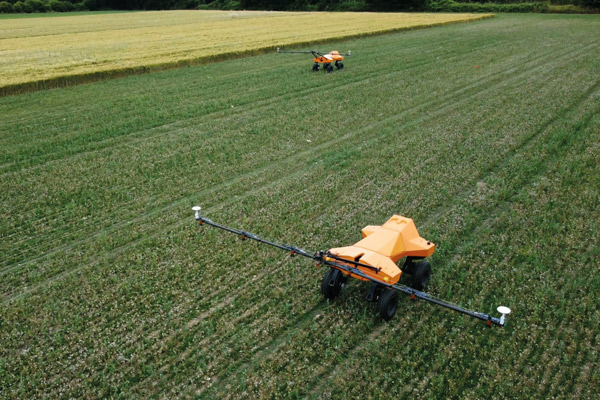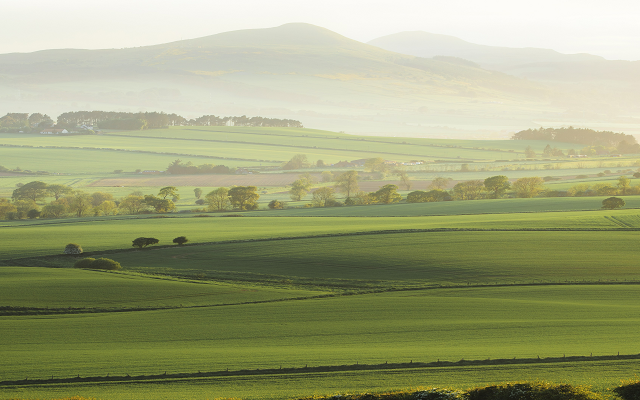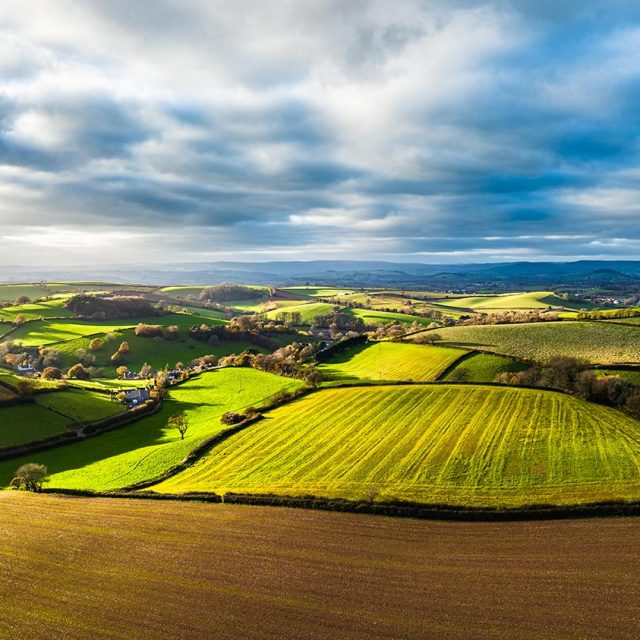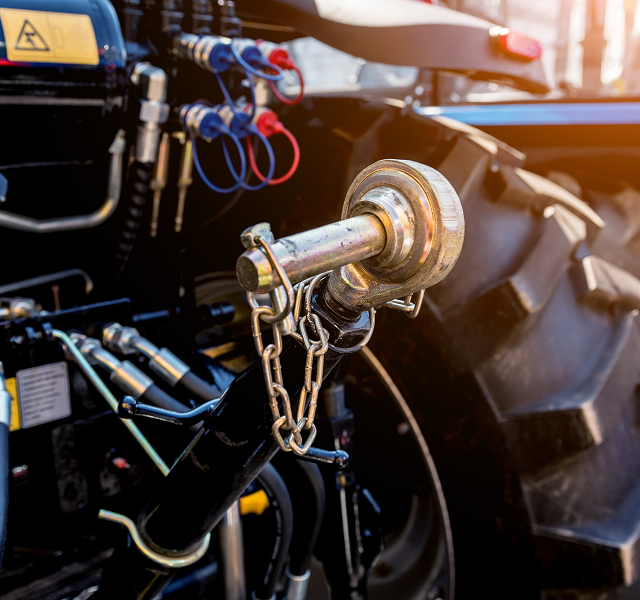Game-changing farming technology offers opportunities
Future farms technology is virtually here. But is the fourth agricultural revolution just the territory of scientists and tech buffs, or will it bring immediate opportunities to land managers and help solve the huge challenges society faces?
Agriculture has never stood still. The period after the Second World War, for example, saw huge changes as artificial fertilisers, pesticides, bigger machinery and high-yielding crops transformed production.
Now, as we journey through the 21st century, a new wave of technology including artificial intelligence, enhanced reality, drones, robotics, autonomous machinery and big data is becoming increasingly available. Farmers of all ages – but particularly those born in the era of the internet and who grew up using apps and social media – are keen to explore its application.
‘Talking about concepts like robotics and AI may sound very futuristic in the context of farming,’ says Jonathan Armitage, Head of Farming for Strutt & Parker’s farming department. ‘But it’s worth remembering that 10 years ago, GPS was out of reach for most farmers, and now it’s there in your pocket, or on your wrist. You reach a tipping point where something becomes a viable answer to a specific problem, rather than just a concept. I think we’re pretty close to that now with a wave of technological solutions to some very real farming problems.’
The price curve for new agriculture technology is downwards
David Ross, chief executive of the part government-funded Agri-EPI Centre agrees and points out that the significant increases in the cost of labour, supplies, machinery and fuel make the potential for cost-savings even greater. ‘When prices go up, the cost-benefit-analysis changes. If, last year, you had estimated that a tech solution might save you 15% for example, this year you’re saving 15% of a much larger sum. Plus, of course, the price curve for technology is downwards, whereas the increased cost of inputs is likely here to stay.
‘As well as the savings curve, there is a win-win opportunity in terms of emissions reductions and meeting net zero. All of these challenging issues for farming are inter-connected, and so recent events are only going to accelerate the adoption of technology such as robotics, moving it rapidly from labour augmentation through to labour replacement.’
Precision farming technology to maximise food production
The Agri-EPI Centre has over 200 member organisations who have bought into this vision of a world where engineering and precision agriculture technologies maximise sustainable food production and supply.
An example is a collaboration project that came to fruition in summer 2022, where vets are using augmented reality headsets that identify individual cows, and display health and productivity data about the animal on the spot, eliminating the time-consuming back and forth to the farm office to review various paper records.
Disappearing subsidies, net zero targets, fertiliser costs – these are all topics that
that focus minds on productivity, sustainability and efficiency. But the one subject that dominates every conversation is that of labour shortages, caused by well-documented factors.
While the prospect of robots and artificial intelligence replacing human beings unsurprisingly causes consternation in many industries, in farming it’s emotive, but less controversial, perhaps reflecting the problems many farmers face in recruiting. ‘There simply aren’t young people queuing up to carry out laborious, repetitive, outdoor work,’ says Armitage. ‘With those trends, with Brexit and the cost of labour, it’s only going one way.’
‘Game-changing’ farming technology
In Shifnal, Shropshire, it’s already gone that way, where the Bradford Estates is one of a group of landowners in the area pioneering the use of an autonomous, solar-powered, field robot controlled by GPS. Sold by a local company Agri-Droid, it undertakes both sowing and weeding, in and between rows.
Oliver Scott, farms director for the Bradford Estates, is a convert. ‘For the job I’m doing with it – which is about growing wildflowers, it’s a complete game-changer.’
The robot drills the seed and knows precisely where each seed is planted. It can then hoe inter-row and inter-plant, whereas a tractor only knows where to go if it can see a line of crop.
‘You can see the Farm-Droid technology developing over time so you might run, say, one renewable-powered robot per thousand acres,’ says Scott. ‘At a time when recruiting even skilled labour is a challenge, this means people could then manage more land, which would also deliver payroll savings.’
Hi-tech fencing for ‘an almost immediate return on investment’
Meanwhile, in Perthshire, a herd of 50 Luing cattle are roaming the Highlands wearing something that looks much like an old cowbell around their necks. Each Nofence collar houses a GPS system, two solar panels, a motion sensor, plus audio and electric pulses, making it an all-in-one ‘virtual’ fence, herd monitoring and tracking system.
When an animal crosses the virtual boundary the collar plays an audio warning, which rises until, if necessary, a mild electric pulse is given. The animal learns to recognise the audio warning is a precursor to the pulse, so turns around to avoid it.
‘Unusually, for a hi-tech product, there is an almost immediate return on investment,’ says Andrew Duncan, owner of the herd and a senior associate director in the Perth office of Strutt & Parker.
‘The technology has opened up 450ha of ground for conservation grazing. The alternative of physical fencing over some difficult and remote terrain would be expensive and have a significant landscape impact.
Tom – the farming technology robot who can detect weeds
‘There’s also a huge timesaving of being able to monitor the herd on the go and getting alerts when there is a potential issue with a cow being inactive. Plus, with a focus on grazing a variety of habitats in a mob-grazed regenerative system, it is possible to view a heat map allowing grazing pressure to be adjusted for maximum benefit.’
While keeping track of 50 cows the old-fashioned way is at least feasible, treating millions of plants in a large arable field individually really isn’t. That’s the problem being tackled by the Small Robot Company, the British agri-tech start-up based in Wiltshire, who are using robotics and artificial intelligence (AI) to collect ‘per plant’ data and process it for insights.
‘It’s a new model for regenerative and profitable farming,’ says Sarra Mander, chief marketing officer for SRC, ‘enabling farmers to digitise entire fields quickly and without compaction. Our ‘Tom’ robot can count plants, detect weeds and pests, and measure herbicide effectiveness. We then create a ‘treatment map’ and optimise sprayer equipment. That reduces overall herbicide use and ensures maximum crop health and yield.’
Farming technology can deliver unmatched precision
The Small Robot Company claims that it can save around 80% on both herbicide and glyphosate costs, and 15% on fertiliser (significant, given the recent rises in prices) through the insights that their robot delivers.
‘Systemic transition in farming – the fourth agricultural revolution – is about precision more than speed,’ says Mander. ‘Farming simply doesn’t have the margins to be wasting such a huge percentage of expensive – and impactful – nutrients, dictated by heavy, scatter-gun tractor-based systems.’
‘A tech revolution isn’t going to happen overnight,’ explains Armitage. ‘Businesses have got to recoup their investment in existing machinery – and that might be four, five years away. But from this point on, when big machinery comes up for renewal, farmers have more and more proven high-tech options such as optical graders, field-robots, geospatial analytics, or drones. And they will have genuine solutions to the labour issues that, really, have been out of their hands for several years now.’
Project Gigabit is the key to metaverse farming
Underlying any planned tech investment by farmers, of course, is confidence in the digital infrastructure and connectivity. Buildings, equipment for livestock-monitoring, drone farming, smart crops, big data, autonomous machinery are all reliant on high-speed, reliable, responsive networks.
Poor connectivity can be a real barrier in many rural areas, although the government has committed £5bn of investment in Project Gigabit to ‘enable and deliver fast and reliable digital connectivity for the entire country’. That takes on even greater relevance with the metaverse being promoted as the future of the internet. Facebook founder Mark Zuckerburg has summed it up as an ‘embodied internet you are inside of, rather than looking at.’
Farming in that ‘embodied internet’ is a development that we’ll be hearing about more and more. As one example of how it might develop, high-tech farmers could create a digital ‘twin’ of their farm to plan the most efficient management of each parcel of land, harnessing the power of big data to enhance decision-making, planting and harvesting.
If one such slogan for farming’s future – ‘plant it in the metaverse, harvest it in the real world’ – is to become a reality (augmented, artificial or otherwise), Project Gigabit could be the most important development of all.
To discuss the contents of this article contact Andrew Duncan. This article first appeared in our latest issue of Land Business. For more download the Autumn 22 edition of Land Business.






